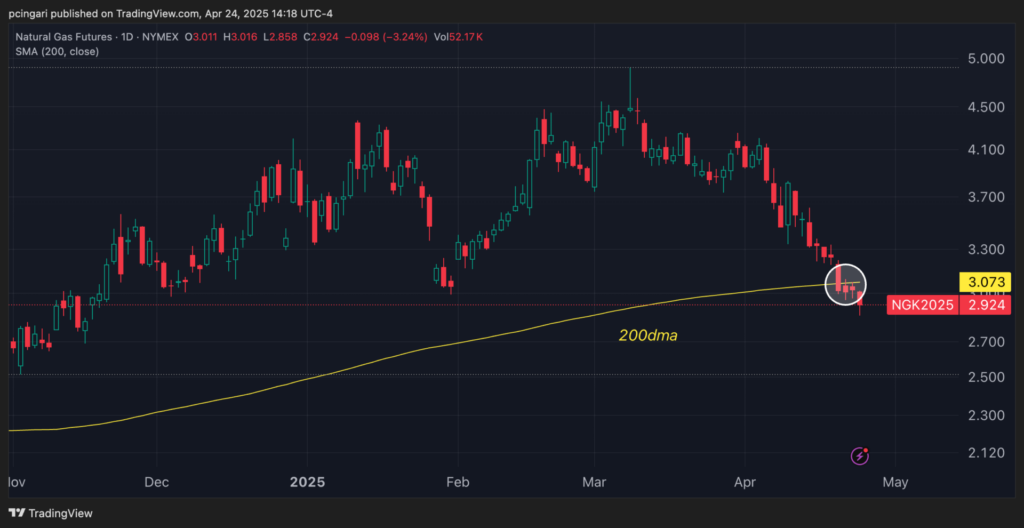Zinger Key Points
- Ed Yardeni, president of Yardeni Research, said investors may be underestimating the underlying strength of U.S. natural gas demand.
- Despite falling prices, U.S. production remains on an upward trajectory.
- Don't face extreme market conditions unprepared. Get the professional edge with Benzinga Pro's exclusive alerts, news advantage, and volatility tools at 60% off today.
Natural gas futures extended their relentless slide into a tenth consecutive session Thursday, marking the worst losing streak since October 2019, yet one veteran market strategist sees a sharp turnaround ahead if trade tensions ease.
In a note shared Thursday, Ed Yardeni, president of Yardeni Research, said investors may be underestimating the underlying strength of U.S. natural gas demand, particularly from utilities and exporters of liquefied natural gas.
“If tariffs subside, natural gas prices stand to bounce sharply," Yardeni said.
Henry Hub Prices Touch 6-Month Lows Amid Tariff Uncertainty
The front-month Henry Hub natural gas contract — as broadly tracked by the United States Natural Gas Fund UNG — traded at $2.90 per million British thermal units on Thursday, its lowest level in six months.
Prices earlier this week broke below the 200-day moving average, a technical occurrence unseen since September 2024, deepening the bearish sentiment gripping the market.

The ongoing rout comes in the wake of escalating trade tensions, including China’s retaliatory 49% tariff on U.S. liquefied natural gas imports, first introduced at 15% on Feb. 10.
The tit-for-tat response to tariffs from the Trump administration has shaken global demand forecasts and altered trade flows, analysts said.
Chinese imports of U.S. LNG have plummeted to zero in recent months, according to shipping data cited by The New York Times.
Supply Grows, But So Does Demand
Despite falling prices, U.S. production remains on an upward trajectory. Since 2022, output has increased by 1.5 trillion cubic feet, while consumption grew by 1.0 trillion and exports rose 0.8 trillion.
Yardeni said this dynamic has left inventories thin, with U.S. natural gas stocks about 10% below the five-year average for this time of year.
“U.S. production of natural gas has increased nicely in recent years, but U.S. consumption and exports of the fuel have grown even faster," he said.
Since 2022, U.S. production has grown by 1.5 trillion cubic feet, while domestic consumption rose by one trillion and exports jumped by 0.8 trillion cubic feet.
The tight balance has drawn down inventories, leaving natural gas stocks about 10% below their five-year average for this time of year.
Data from the Energy Information Administration supports his view. U.S. consumption is projected to rise 1.8% in 2025 to 92 billion cubic feet per day, while LNG exports are forecast to jump 19% to 14.2 billion cubic feet per day.
While the short-term outlook for natural gas prices remains clouded by tariffs and geopolitical tensions, tight inventories and robust global demand suggest the current slump may not last.
Read Now:
Photo: sdf_qwe via Shutterstock
Edge Rankings
Price Trend
© 2025 Benzinga.com. Benzinga does not provide investment advice. All rights reserved.
Trade confidently with insights and alerts from analyst ratings, free reports and breaking news that affects the stocks you care about.